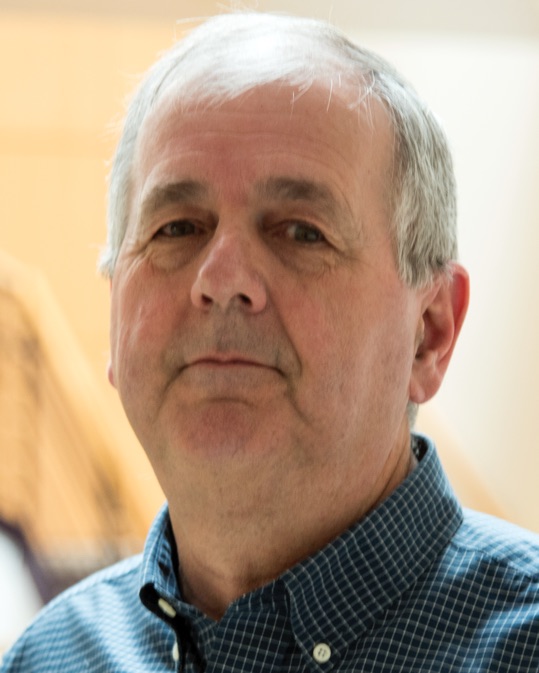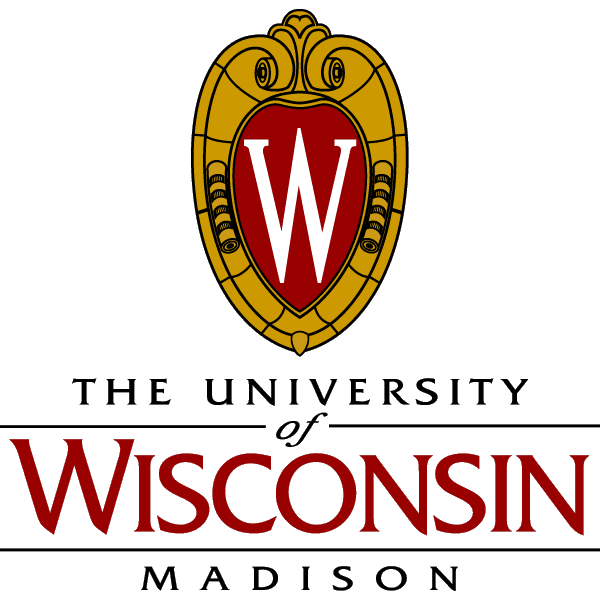Improving cancer treatments, forensic analyses, and drug development through bacterial directed evolution
The most serious DNA lesion in a chromosome or cell molecule is a DNA double strand break. These breaks often occur during replication of a cell or when exposed to radiation. If left unrepaired, one DNA strand break can be lethal. Dr. Michael M. Cox, professor in the Department of Biochemistry at University of Wisconsin-Madison uses novel genetic recombination methods to understand the biology and biochemistry of DNA double strand break repair in bacteria. His lab is invested in using directed evolution of bacteria to create ionizing radiation resistant bacteria and provide a precise definition of the molecular processes that underlie radiation resistance. Working with novel bacterial enzymes that play an important role in double strand break repair, this research will lead to improved cancer therapies, forensic DNA analyses, and the development of effective pharmaceuticals and probiotics.
Radiation resistant bacteria have the most robust double strand break repair system in biology. Deinococcus radiodurans is a fairly well-studied bacterium that can survive extreme levels of ionizing radiation (measured in Grey units (Gy), a lethal dose of ionizing radiation for humans is three to five Gy; this bacterium can survive 5,000 Gy). When hit with high levels of radiation, the bacteria’s DNA endures thousands of double strand breaks, and its genome is destroyed. However, Deinococcus can completely reconstruct its chromosome within two hours, as it places the overlapping pieces together. Dr. Cox wants to create cells that are even more radiation resistant than Deinococcus.
Because Deinococcus produces more than 4,000 proteins, identifying which proteins are important in DNA repair can be a time-consuming task. Using directed evolution, Dr. Cox and his interdisciplinary team of technicians, graduate students, and undergraduate researchers—who specialize in genetics, enzymology, biochemistry, and structural biology—are able to speed up this process. Using this innovative approach, they are able to make a bacterial species radiation resistant by repeatedly hitting it with radiation, growing up the survivors, and tracing the important mutations. Through bioengineering, they want to complete the molecular definition of radiation resistant cells, completely understand the mutations underlying radiation resistance, and transfer a defined set of mutations into another bacterial species to make it radiation resistant. The practical impacts from their research projects are expected to mature within the next five years.
Current research includes:
- Directed Evolution of Resistance to Ionizing Radiation - Certain bacteria, such as Deinococcus, have an enhanced ability to repair DNA strand breaks and endure radiation. Dr. Cox and his team are interested in identifying the molecular factors that enable a cell to survive high levels of radiation, which often involves their capacity to repair double strand breaks. Using directed evolution, they are learning how these cells evolve in order to engineer bacteria and other organisms to be more radiation resistant. The development of radiation-resistant bacteria has many implications, including mitigation of side effects of cancer radiation therapy and the development of pharmaceutical agents. Radiation therapy treating cancer in or near the digestive tract often destroys the intestinal bacterial microbiome, resulting in very dangerous pelvic radiation diseases. Dr. Cox and his team are working to engineer radiation resistant probiotics to treat or eliminate those conditions. Additionally, these engineered enzymes can improve the production of organic chemicals for pharmaceutical agents. When any unwanted contaminating bacteria or organisms in cultures are irradiated, they will be eliminated, while the radiation resistant bacteria survives.
- Understanding the Enzymology of Purified Proteins - Dr. Cox and his team are exploring the enzymology of purified proteins that are involved in double strand break repair. They want to understand the biochemistry of the RecA recombinase—a prototype of a class of enzyme present in all cells—and auxiliary proteins. These bacteria proteins, similar to the BRCA2 protein (for which a mutation in the associated gene gives rise to breast and ovarian cancer), function as a cancer avoidance system in humans. They also have the potential to repair degraded forensic DNA samples that are too degraded to be successfully analyzed due to age, fires, or intentional damage. Dr. Cox and his team are working with a crime lab to develop a novel technology that accurately repairs the double strand breaks in such samples, rendering them suitable for analysis.
- Exploring the Novel Recombination Enhancement Function (REF) Enzyme - Dr. Cox and his team are exploring a purified enzyme, REF, which was identified through their novel work in DNA double strand break repair. This enzyme is encoded by bacterial viruses (phages) that effectively kill bacteria. When this protein is biologically engineered into a phage, it enhances the bacteria-killing abilities of a phage. REF is being developed as a potential adjuvant for phage therapy, complementing existing antibiotics and enabling the development of more effective treatment of antibiotic-resistant pathogens in bacterial infections.
For more information, visit Dr. Cox’s website at https://biochem.wisc.edu/labs/cox/publications-cox-lab.
Bio
Dr. Michael Cox has always had a strong curiosity about life, which has been the motivation behind his research. From the time he was very young, he knew was going to be a scientist. Growing up in the suburbs of Delaware, he lived on the edge of expansive farmland. He would spend a lot of time looking at the plants and creatures that lived there. As a six-year-old, he loved watching seeds germinate and grow up. Dr. Cox was simply fascinated by all living things and the way in which they function.
As a graduate student, he learned how enzymes work on a very fundamental level, and studied organic chemistry during his Ph.D. work. It was during his time working as a postdoctoral fellow at Stanford University under Dr. Bob Lehman that Dr. Cox became fascinated with DNA repair and recombination.
He was particularly interested in RecA, a protein that had just been discovered. RecA is a recombinase that plays a large role in double strand break repair, which no researcher had previously studied. Thus began Dr. Cox’s research in looking at recombinational DNA repair, a field in which he’s still completely fascinated with. He says, “I think every scientist, at some point, falls in love with a problem. And that was the one I fell in love with.”
When he’s not in the lab, Dr. Cox loves to garden, and has spent the last 30 years turning half of his 18-acre land into an arboretum of diverse trees. The rest of his land is home to restored prairies, vegetable gardens, and flower gardens. He is also an avid wine collector, enjoys traveling with his wife, and writing; he is a co-author of a major Biochemistry textbook now in its 7th edition.
Publications
Awards
Evelyn M. Mercer Professor in Biochemistry, 2013-2023
Elected American Association for the Advancement of Science (AAAS) Fellow, 2011
University of Wisconsin Regents' Teaching Excellence Award, 2009
WARF Kellett Mid-Career Faculty Research Award, 2000
Vilas Associate Award, University of Wisconsin Graduate School, 1998
Spitzer Teaching Award, University of Wisconsin College of Agriculture and Life Sciences, 1994
Romnes Faculty Fellowship, 1989
Eli Lilly Award, American Chemical Society, 1989
Patents
Method for using Ref protein as a targeted RecA-dependent nuclease.
U.S. Patent No. 20120088276: "Method for using Ref protein as a targeted RecA-dependent nuclease." Inventors: Michael M. Cox, Marielle C. Eichhern-Gruenig, James L. Keck. Issued 2012.
Method for DNA Double-Strand Break Repair in Vitro and Applications Thereof.
U.S. Patent No. 20100317009: "Method for DNA Double-Strand Break Repair in Vitro and Applications Thereof." Inventors: Michael M. Cox, John R. Battista, Audrey J. Klingele, Joseph R. Piechura. Issued December 16, 2010.
Method to protect DNA Ends.
U.S. Patent No. 7,211,393: "Method to protect DNA Ends." Inventors: Michael M. Cox, Dennis R. Harris, Sergei V. Saveliev, Julie M. Eggington, John R. Battista, Edmond Jolivet, and Masashi Tanaka. Issued 2007.
RecA Mutants.
U.S. Patent No. 7,176,007: "RecA Mutants." Inventors: Michael M. Cox, Shelley Lusetti, Aimee Eggler, and Nami Haruta. Issued 2007.
Chromosomal targeting in bacteria using FLP recombinase.
U.S. Patent No. 6,140,129: "Chromosomal targeting in bacteria using FLP recombinase." Inventors: Michael M. Cox, Elizabeth Wood and Li-chun Huang. Issued 2000.


